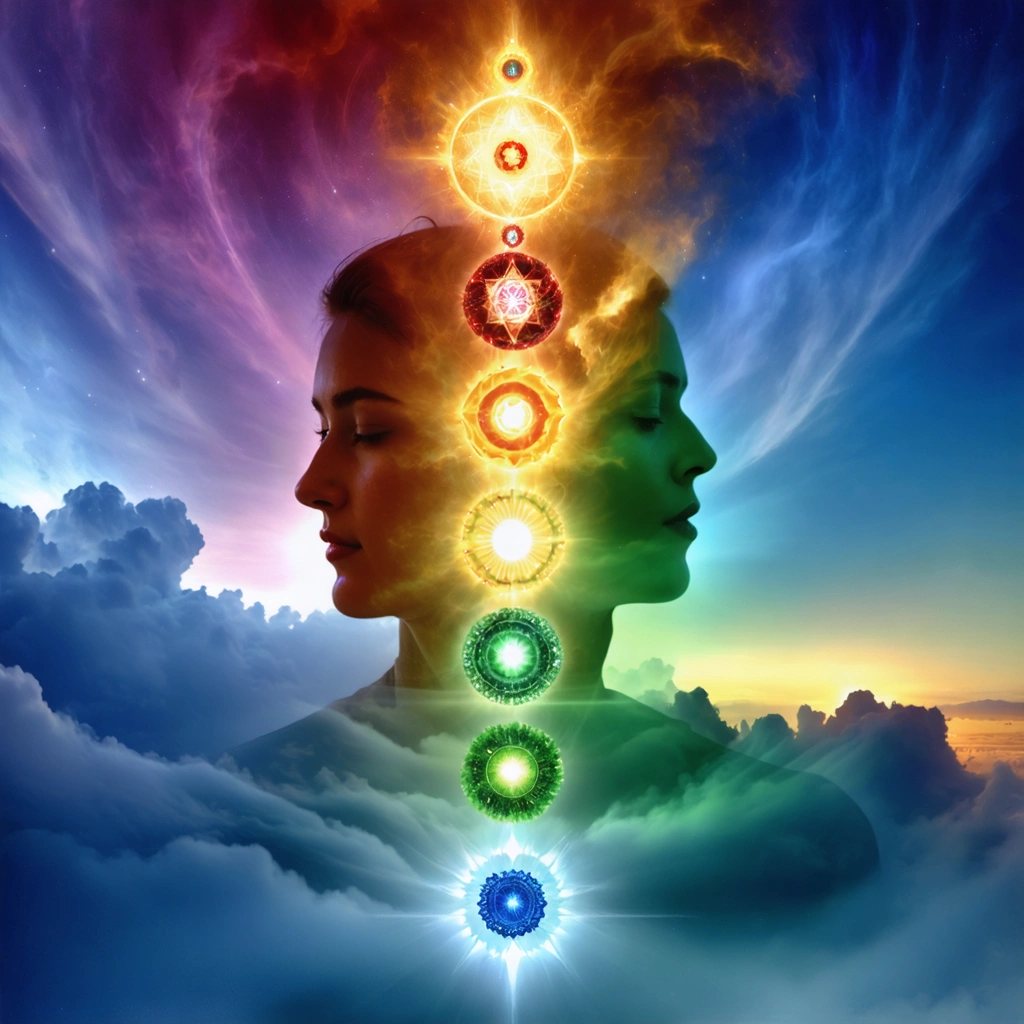
In the realm of human energy, chakras serve as the vibrant wheels of power that animate our physical, emotional, and spiritual well-being. Over centuries, diverse cultures have celebrated and harnessed the potential of these energy centers. Today, we embark on a narrative journey that explains each chakra’s distinct qualities, the color symbolism that surrounds them, and the potential benefits they offer those who nurture balance within. As we traverse these energetic pathways, we embrace ancient wisdom alongside modern insights, and we explore how clearing these channels might lead to inner harmony and personal growth.
The Root Chakra (Muladhara)
Often considered the foundation of our energetic system, the Root Chakra anchors us to the physical world. It organizes the primal needs such as safety, security, and survival. This chakra, typically depicted in red, invites feelings of grounding and stability. For instance, when challenges arise, a balanced Root Chakra empowers individuals to stand firm without being overwhelmed by fear or anxiety. Moreover, many practitioners introduce grounding exercises, mindful breathing, and even physical activities like yoga to fortify this center.
To assist in fully comprehending the Root Chakra, consider these essential elements:
- Location: Base of the spine
- Color: Red
- Attributes: Stability, security, foundation of life
Continuing forward, we witness how the ability to form a secure base influences both everyday routines and long-term dreams.
The Sacral Chakra (Svadhisthana)
This chakra thrives just below the navel, radiating warmth and creativity. The Sacral Chakra relates closely to emotions, sexuality, and the capacity for artistic expression. Many cultures regard its vibrant orange hue as a symbol of energy flow and entrepreneurial spirit. Beginners often discover that tapping into the Sacral Chakra opens up channels for creative expression and deeper interpersonal connections. Hence, vibrant dance, creative arts, and even mindful journaling help illuminate this energy center.
Furthermore, when the Sacral Chakra remains balanced, individuals may enjoy enhanced empathy and improved communication skills. To highlight its features, consider this numbered list:
- Location: Lower abdomen
- Color: Orange
- Focus: Creativity, pleasure, interpersonal relationships
Ultimately, nurturing this chakra leads to a harmonious blend of creativity and emotional vitality.
The Solar Plexus Chakra (Manipura)
Positioned in the upper abdomen, the Solar Plexus Chakra governs personal power, will, and self-esteem. Its radiant yellow color embodies the vibrance of the sun, and it inspires individuals to harness confidence and determination. In our narrative journey, stories abound of those who, after experiencing shifts within this chakra, discover newfound courage and decisiveness. In practical life, martial arts, mindful meditation, and affirmations prove particularly effective in reinforcing its energy.
Key points about the Solar Plexus Chakra include:
- Location: Stomach area
- Color: Yellow
- Focus: Personal empowerment and identity
Consequently, maintaining balance in this chakra often translates into improved decision-making and personal achievement.
The Heart Chakra (Anahata)
The Heart Chakra sits at the center of our energy system and symbolizes the bridge between the physical and the spiritual. Represented by a soothing green, or occasionally pink, its fundamental attributes include love, forgiveness, and compassion. Throughout history, healers and scholars alike have revered this chakra for its immense capacity to connect individuals on an emotional level. The narrative of transformation through the Heart Chakra often details experiences where love and acceptance radically alter one’s life perspective.
Consider the following table, which outlines the fundamental characteristics of the Heart Chakra:
| Feature | Description |
|---|---|
| Location | Center of the chest |
| Color | Green/Pink |
| Qualities | Love, compassion, emotional balance |
Cultivating a vibrant Heart Chakra encourages practices such as loving-kindness meditation and acts of service, thereby facilitating profound inner healing.
The Throat Chakra (Vishuddha)
Shifting upward, the Throat Chakra governs communication, self-expression, and creative articulation. Its beautiful blue hue symbolizes clarity and reliability. When we find harmony within Vishuddha, we acknowledge the power of our voices and the significance of honest expression. In various narratives, individuals report breakthroughs in personal transformation when they dare to speak their true thoughts. This balance often triggers a domino effect that enriches relationships and fosters community engagement.
Practitioners typically engage in practices such as chanting, vocal exercises, and mindful listening to clear blockages and promote free-flowing expression. As a result, many feel empowered to communicate more effectively and authentically with the world.
The Third Eye Chakra (Ajna)
Situated in the middle of the forehead, the Third Eye Chakra radiates indigo and governs the realm of intuition, insight, and inner wisdom. This chakra emerges as a focal point for those seeking to understand subtle energies and spiritual truths. Numerous individuals discover that as they nurture Ajna, they begin to see beyond the surface of daily interactions. Consequently, the world reveals its deeper layers of meaning. In modern spiritual practice, visualization and meditation techniques frequently serve as powerful tools to activate this energy center.
Furthermore, the Third Eye plays a pivotal role when individuals pursue clarity in decision-making or when they need to navigate uncertain situations. Hence, this chakra not only fortifies our sense of intuition but also underpins our capacity for self-reflection and inner resolve.
The Crown Chakra (Sahasrara)
At the pinnacle of our energetic system, the Crown Chakra represents the gateway to higher consciousness. Displaying a luminous violet or white color, it connects individuals to universal wisdom and spiritual enlightenment. In this narrative journey, many share transformative experiences where opening the Crown Chakra leads to a profound understanding of interconnectedness. Although abstract in nature, this chakra embodies life’s higher purpose and our eternal quest for meaning.
Practitioners often engage in deep meditation, prayer, and contemplation to nourish Sahasrara. Such practices foster an open heart and mind, ultimately allowing for an expanded sense of presence and unity with all things.
Integrating Chakra Wisdom for Daily Living
In addition to understanding individual chakras, our holistic narrative emphasizes the importance of balancing these energy centers collectively. Many experts suggest that each chakra interacts with the others, creating a dynamic interplay that influences our overall vitality. Therefore, adopting a holistic approach becomes essential. To facilitate this process, practitioners often consider the following strategies:
- Engaging in daily mindfulness exercises
- Incorporating yoga sequences that focus on energy flow
- Utilizing meditation techniques specific to each chakra
- Adopting balanced nutrition and a healthy lifestyle
- Practicing gratitude and self-reflection regularly
These methods not only improve individual chakras but also enhance the overall energetic ecosystem within the body.
Moreover, you may incorporate visualization practices. For example, imagine a vibrant wheel of light glowing at each chakra location. As you move upward from the Root Chakra to the Crown Chakra, you observe how each center contributes to your personal energy mosaic. Although scientific research on chakras remains limited in the Western academic sphere, anecdotal evidence and traditional wisdom reinforce their significance in our lives.
Practical Benefits and Future Perspectives
Today, modern wellness communities combine ancient wisdom with contemporary techniques to address everyday stress, anxiety, and disconnection. As individuals experience the benefits of balancing their chakras, they begin to report increased clarity, improved mood, and better overall health. In addition, complementary therapies such as Reiki, acupuncture, and aromatherapy integrate chakra balancing techniques to promote holistic healing. Consequently, embracing chakra practices can lead to a noticeable enhancement in both physical and emotional well-being.
Furthermore, the interplay of all seven chakras encourages not only personal transformation but also sets the stage for societal empathy and unity. Leaders and community figures who have embraced these techniques report that their actions resonate deeply within the communities they serve, thereby establishing an environment of trust and authenticity. As our understanding of energy and wellness continues to evolve, we may witness an increased incorporation of these ancient practices into modern healthcare paradigms.
In conclusion, our journey through the chakras has revealed a fascinating interplay of energies that govern the human experience. While ancient traditions provide the blueprint, contemporary practices bring these concepts to life in practical, touchable ways. Ultimately, exploring chakras transforms not only personal wellness but also fosters a broader, interconnected awareness of life. As you move forward, consider integrating these practices into your own daily routine. Embrace the notion that balanced energies empower living, enhance creativity, foster emotional resilience, and elevate spiritual consciousness. Each chakra stands as an invitation to explore inner landscapes, and may your energetic journey unfold with insight and profound transformation.






